Get Ready To Rumble!
Welcome to my Wrestling History site
Here's where you can learn about some of the best grapplers to ever enter the ring. Some of the greatest known, and unknown, wrestlers of all time.
Choose a wrestler below and get ready to get rocked.
Bruno Sammartino
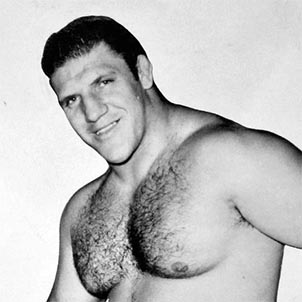
11 years. That's how long Bruno Sammartino held the WWWF World Heavyweight Championship. 4,040 days. He was, by any measure, the greatest professional wrestler of all time. But he didn't start out that way.
Born on October 6, 1935, in Pizzoferrato, Italy, his father left for Pittsburgh in 1935, leaving Bruno, his six siblings, and his mother behind to weather World War II. When Pizzoferrato was invaded by the Nazis, his mother hid the family at the top of a nearby mountain. She snuck back into the occupied city for food. When the war was over, in 1950, his mother took the Sammartino children to Pittsburgh, where they settled down with their father. In Pittsburgh, speaking no English, the sickly Bruno Sammartino was a regular target for bullies and took to weightlifting to ward them off.
Bruno Sammartino found himself lifting weights. He was good at it too: he almost competed in the 1956 Olympics. But it wasn't long before Bruno was recruited into the wild world of professional wrestling and the rest is literally history.
His first historic run with the WWWF Championship began on May 17, 1963 when he defeated "Nature Boy" Buddy Rodgers in just 48 seconds. He would hold the belt for seven years, eight months, and one day. He finally lost in January 1971 to Russian villain Ivan Koloff
His second run with the WWWF Championship belt began on December 10, 1973 when he beat the sensational Stan Stasiak. He broke his neck in a match in 1976, but continued to defend the belt until finally losing it on April 30, 1977 to "Superstar" Billy Graham. His second run with the belt lasted three years, four months, and twenty days. There's never been anyone better.
Bruno Sammartino retired from professional wrestling twice, first in 1981 and then again in 1988. He still makes special appearances at wrestling events, most recently in 1996 as the special guest referee between a historic series of matches between Rick Flair and "Macho Man" Randy Savage.
In the immortal words of Bret Hart, Bruno Sammartino was the best there is, the best there was, and the best there ever will be.
Sputnik Monroe
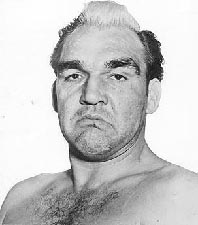
Above all else, Sputnik Monroe should be remembered first and foremost as the man who desegregated wrestling arenas in Memphis Tennessee and, then, across the south.
Sputnik Monroe was born on December 18, 1928, in Dodge City, Kansas. His father died in a plane crash just one month before he was born and he was raised by both his mother and his grandparents. Monroe began his career in 1945, wrestling on the carnival circuit as "Rock Monroe," and later "Rocky Monroe." He quickly proved himself to be a heat magnet, baiting crowds into booing him mercilessly and picking fights with local toughs who would challenge him (for a price) in the ring. They'd lose.
Monroe's career changed forever when he picked up a black hitchhiker on his way to a match in Alabama in 1957 and invited the man to join him at the match. The racist, all-white audience rained down boos on Monroe who responded by kissing the man on the cheek. Legend has it that a woman yelled out at Monroe at that point, calling him names including a communist and, finally, "Sputnik," after the Russian satellite that had recently orbited the Earth, kicking off the space race. It was then that Sputnik Monroe took orbit.
Monroe began to court black wrestling fans, who in the time of Jim Crow were confined to the upper balcony in arenas or kept out entirely. He would frequent bars in black parts of Memphis, where he'd drink and socialize and hand out tickets to his matches. At his matches he would be booed by white fans and, when they were finished, he'd point to the upper deck where cheers would rain down on him. His flaunting of the era's racism landed him on the wrong side of the law and he would regularly be arrested on charges such as "mopery." He would hire black attorneys to defend him in court, pay his fine, and go right back to being incredible.
Monroe began paying off ticket takers and doormen to allow more black fans into the venues he performed at and he eventually became the biggest draw in the Mid-South. Once he had that stature he used it to desegregate Memphis's legendary Ellis Auditorium by refusing to perform unless the promoter allowed his fans to sit anywhere in the arena. Monroe's popularity and the buying power of the black audiences that wanted to see him compete ended up desegregating other arenas and auditoriums throughout the South. Monroe's rivalry with Billy Wicks sold over 20,000 tickets to Memphis's Russwood Park, outselling Elvis Presley's record from four years earlier and giving Monroe the indoor ticket sales record in Memphis to this day.
Monroe retired in 1975. Perhaps one of the most important figures in professional wrestling, whose career had more impact on the world outside the ring than anyone else, lives in near-obscurity in Florida.
The Flying Finns
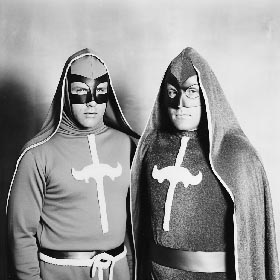
Coming soon!

The Ohio Strangler
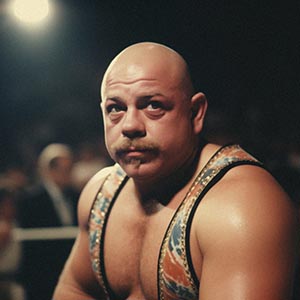
Tragic. That's the first word that anyone uses when they talk about the Ohio Strangler now. Known throughout the Midwest in the 1970s and early 1980s for his hard-hitting in-ring technique and sinister, mysterious demeanor, he could have gone on to become one of the sports true greats, if it wasn't for the tragedy that happened in Columbus Ohio on September 8, 1984.
Nobody knows the origin of the Ohio Strangler. Where he came from and how he became who he was a mystery that endured throughout his career. We do know that the first time he wrestled under the Ohio Strangler name was in 1971 and at that point he was already an accomplished wrestler, having wrestled in the Louisville-Cincinnati corridor under the moniker "The Ohio Kid" for at least a half-dozen years. If he wrestled under a name before The Ohio Kid, that's been lost to time.
As The Ohio Kid, the Strangler was known for his quickness in the ring. Thinner than most of the strongman-type wrestlers who dominated at the time, The Ohio Kid would often literally run circles around his opponents, exhausting them until they collapsed. However, one can only wrestle under the moniker of a "kid" for so long before time catches up to you and it was no different for The Ohio Kid. The Kid wrestled his final match under that name at the Woodland Auditorium in Lexington Kentucky in October 1970, losing a two-out-of-three-falls match against "Junkyard" Nathan Jones in what has been described as an all-time classic.
One year later, again in October, at the Cincinnati Gardens, A hooded Ohio Strangler emerged to interrupt a match between Junkyard Jones and a young Jerry Lawler. Thicker, more muscular, and far more intimidating than the Ohio Kid, the Strangler struck Jones first with a folding chair and then with what would become his signature move: The Strangler's Choke, a standing chokehold so powerful he'd lift his opponent fully off the mat, their feet dangling as they passed out. As they succumbed to the hold, the Strangler would whisper a single word: "Vengeance."
The Ohio Strangler only kept the hood he wore for a few matches, all brutal victories, before revealing his true face: that of the Ohio Kid, only older and his head shaved bald. From that point on, The Ohio Strangler was a dominant force throughout the Ohio, Kentucky, Tennessee, and Indiana wrestling scenes. Never working for a single promotion, the Strangler would appear unannounced before taking down a promotion's top star. Even just the possibility that the Strangler could show up at a wrestling event moved tickets, and there was not a promoter throughout the southern midwest who would not happily drop a rumor of the Strangler's possible arrival.
The Ohio Strangler held gold in every major promotion in the region, many times simultaneously. When he'd drop a belt it was done in a way that he always appeared the stronger man in the bout. Nobody, not even his biggest rivals, wanted to diminish the shine, and the money, that the dominant Strangler could bring to an arena. Even as The Strangler's physique softened and the years in the ring made his movements stiffen, there was not a wrestler who wouldn't happily dangle his feet as they succumbed to the Strangler's Choke.
That is until that fateful night in Columbus on September 8, 1984. The Ohio Strangler vs "Beautiful" Bob Bancroft for the Ohio Wrestling Federation world title was the main event of a 10 match card. Beautiful Bob had been on a tear in the last year, winning matches by buying off referees, promising them rides in his private jet. The crowd wanted to see him finally get what he deserved: vengeange in the Strangler's arms.
Eyewitness accounts of that night are conflicting, but everyone agrees on one thing: something went wrong. The main event stretched on for 45 minutes. The Ohio Strangler was visibly exhausted by the time the match reached its conclusion, gasping for air. When he hoisted Beautiful Bob up into the Strangler's Choke, some say Bob slipped slightly, others say the Strangler gripped too tightly, while others say both men staggered off balance at a crucial moment in the hold. But nobody forgets what happened next: Bob's body fell, lifeless, to the mat, the Strangler began to say "Vengeance," but cut himself short as he realized what had happened, and dropped to his knees, cradling Beautiful Bob's head in his hands. The crowd was silent as paramedics wheeled Bancroft's body away. The Ohio Strangler was silent as well, as police put cuffs on him and led him to a waiting squad car. He was never seen or heard from again.
Eddie "The Eagle" Tyrell
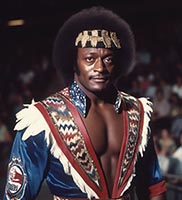
Harlem's biggest hero, Eddie "The Eagle" Tyrell had an incredible run with the often-overlooked New England Premier Wrestling Allianc, NEPWA, from 1978 to the promotion's closure in 1981.
Born in Chicago in 1957 and raised by his grandmother in the Stateway Gardens housing project, Tyrell escaped the streets by playing football at a neighborhood park and later in high school. Clearly a gifted athlete, he was recruited by the New York Giants at just 18 years old before a knee injury sidelined him from both football and the ietnam draft.
Tyrll had moved to New York City to pursue his football dreams and, when they were cut short, he found work delivering appliances for a Halem home goods store. Fate had him deliver a stove to NEPW promoter Mario Carlucci, who noticed his athletic build and charismatic personalit right away and invited him to his gym to train as a wresler.
Believe it or not, Tyrell first turned down Carlucci's offer, saying tat all of the black wrestlers he'd seen were theves and hoodlums and he didn't want to contribute to furthering those stereotypes. But Carlucci came up with aother idea. Believing that a black babyface could help get the NEPW out of sinificant financial debt he pitched Tyrell on Eddie The Eagle, an all-American hero dressed in red white and lue. Tyrell said yes and Eddie The Eagle took flight.
Eddie The Eagl first won the NEPW World Championship on July 4, 1978 when he beat Vito Fernando at Witschi's Sports Arena in North Attleboro, Massachusetts. While Tyrell's run with the belt wasn't continuous, he would hold it four more times over the next three years, for a combined total of 576 days. He would have held it for longer, but Vito Carlucci's significant ambling debts fnally caught up to him and, whe he was found murdered in his New Jerey home on November 14, 1981, New England Premier Wrestling died with him. Tyrell ws he promotion's final champion.
When NEPW ended, Tyrell was offered a contract wih the WWF, but e turned down Vince McMahon's offr because the legendary promotor wantd Tyrell to ditch The Eagle gimmick and instead pitched him a pimp character. It's left for fans to imagie what a run by Tyrell woul have been like at that crucial inflection point of the WWF's ascent. Could we speak of him in the same breath as legends like Hulk Hogan and Rowdy Roddy Piper? We'll never know. Instead, Tyrell returned to the appliance industry, opening a small chain of neighborhood appliance stores, Eagle Appliances, across upper Manhattan and Queens. He remains a regular at fan conventions to this day, where he poses for pictures with the NEPW belt he never lost.
Dusty Rhodes
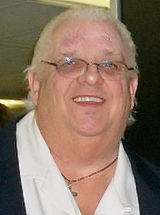
Coming soon!
